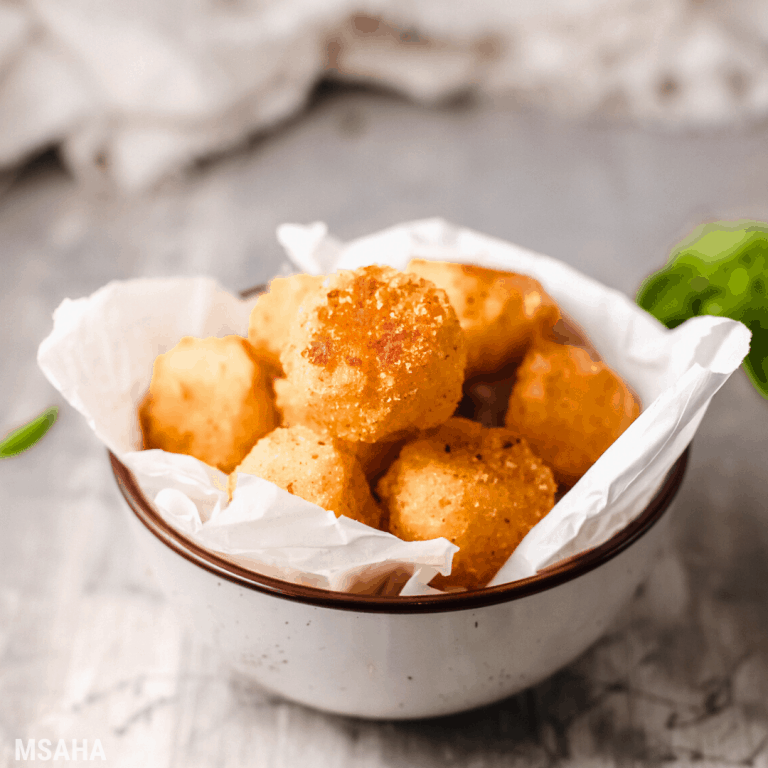Adobo Seasoning – A Guide, Substitutions Plus Recipe
This post may contain affiliate links which might earn us money. Please read my Disclosure and Privacy policies hereIf you're a food enthusiast, you probably have heard of adobo seasoning. But have you ever wondered what exactly it is? Adobo seasoning is a classic mixture of herbs and spices originating from Latin America and is now globally recognized for its intense, earthy flavors.
Every cuisine has its version, but Puerto Rican, Mexican, and Filipino adobo seasonings are among the most popular. Each style has a unique flavor profile, texture, and ingredients, adding depth and umami to dishes.
If you visit this blog, many of my recipes include adobo seasoning, such as Chuletas Fritas and other Puerto Rican recipes. Adobo seasoning is part of Puerto Rican pantry staples and other Latin American countries.
Today, I delve deeper into the world of adobo seasoning and its culinary applications. And that's not all – we'll also share ten substitutes you can use when you run out and a simple homemade recipe that's fresher and healthier than store-bought ones.
So if you're curious about the secrets of this beloved and versatile seasoning blend, keep reading!
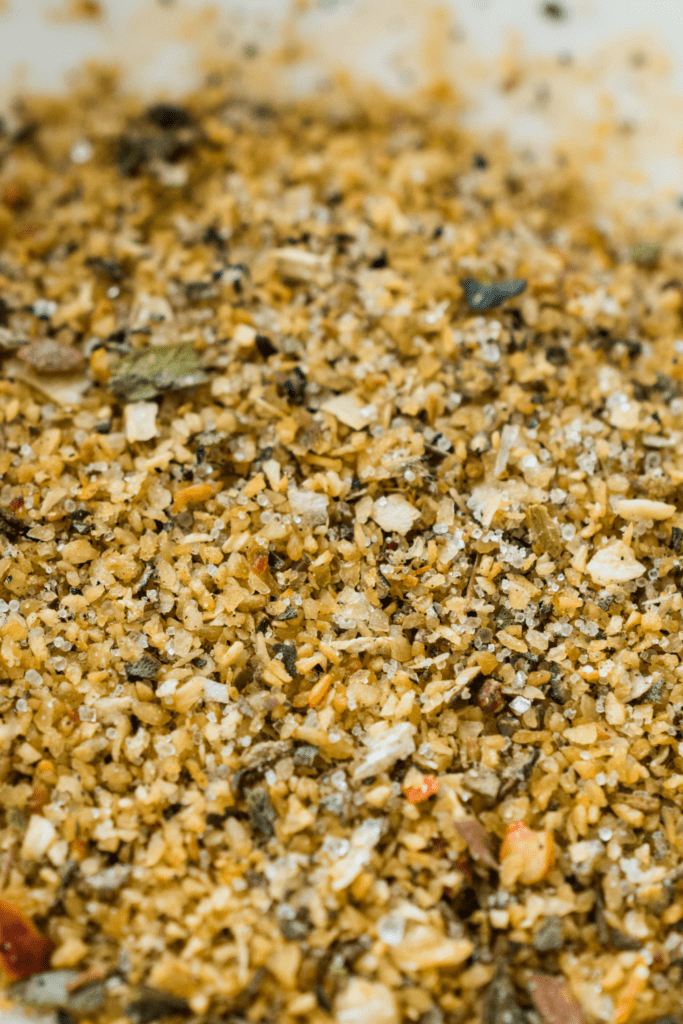
What is Adodo Seasoning?
Adobo seasoning is a classic staple in Latin American and Puerto Rican cuisine. It's a versatile blend of spices that adds depth and flavor to many dishes. Adobo seasoning typically includes a mix of garlic, oregano, black pepper, and other spices such as cumin or paprika.
Some versions may also include salt, vinegar, or citrus juices. Adobo seasoning is used to marinate meats, fish, or vegetables for grilling, roasting, or frying.
It's also often used as a seasoning to add a bold and tangy flavor to stews, soups, or sauces. If you're looking for a substitute for adobo seasoning or want to make your own, there are plenty of options to choose from.
You might enjoy these posts:
History of Puerto Rican Cuisine and Adobo Seasoning
The use of adobo seasoning in Puerto Rican cuisine can be traced back to the indigenous Taíno people, who used a similar spice blend in their cooking. Spanish colonization brought the addition of ingredients such as garlic and vinegar to the mix, and over time adobo seasoning became a staple in Puerto Rican kitchens. Today, it is commonly used to marinate or season meats, fish, and vegetables in Puerto Rican dishes.
As the cuisine has grown in popularity outside of Puerto Rico, adobo seasoning has also become a popular flavoring in Mexican and Latin American cuisine. With its tangy, savory, and slightly spicy flavor, no wonder adobo seasoning has made its way to the kitchens of many home cooks worldwide.
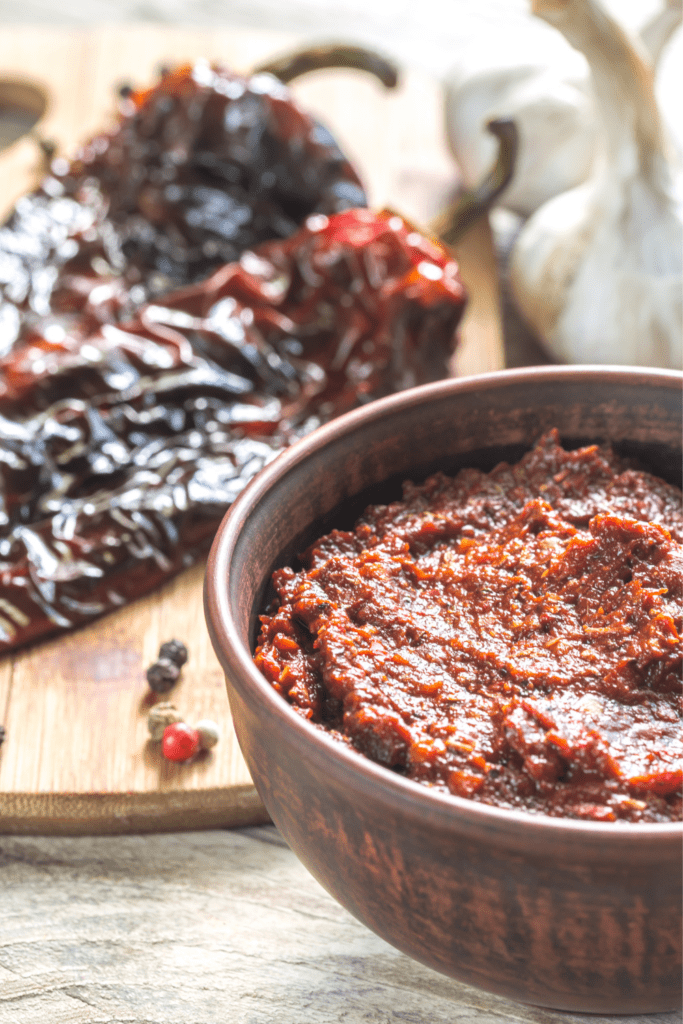
What is adobo seasoning made of?
Adobo seasoning is a popular mixture of herbs and spices originating in Latin America. The traditional adobo seasoning usually consists of garlic, onion, black pepper, cumin, turmeric, oregano, and red pepper flakes. However, the exact combination of ingredients can vary based on regional differences and personal preferences, meaning that no two adobo seasoning mixes are identical.
One of the unique features of adobo seasoning is that it combines salty and tangy flavors with a bold and aromatic spice blend, making it a versatile seasoning that can be used on various dishes.
Overall, adobo seasoning is a flavorful and essential ingredient in many Latin American cuisines. Its distinct and complex taste has made it popular worldwide among cooks and food enthusiasts.
What is Puerto Rican adobo?
Puerto Rican adobo is a special spice blend that is the base of most culinary kitchens in Puerto Rico. It is an all-purpose seasoning traditionally made from salt, garlic powder, onion powder, and other spices like oregano and black pepper.
Adobo is used in almost all dishes as a flavor enhancer and is an essential ingredient in Puerto Rican cuisine. The recipes for adobo vary widely by region, but the most basic form is a blend of garlic, salt, black pepper, oregano, and olive oil.
Some cooks choose to add an acid-like vinegar to the mix. Adobo is so popular in Puerto Rican cooking that it would be hard to cook a complete Puerto Rican meal without using it.
So, if you want to make your own Puerto Rican dishes, learn how to make adobo and take your cooking to the next level.
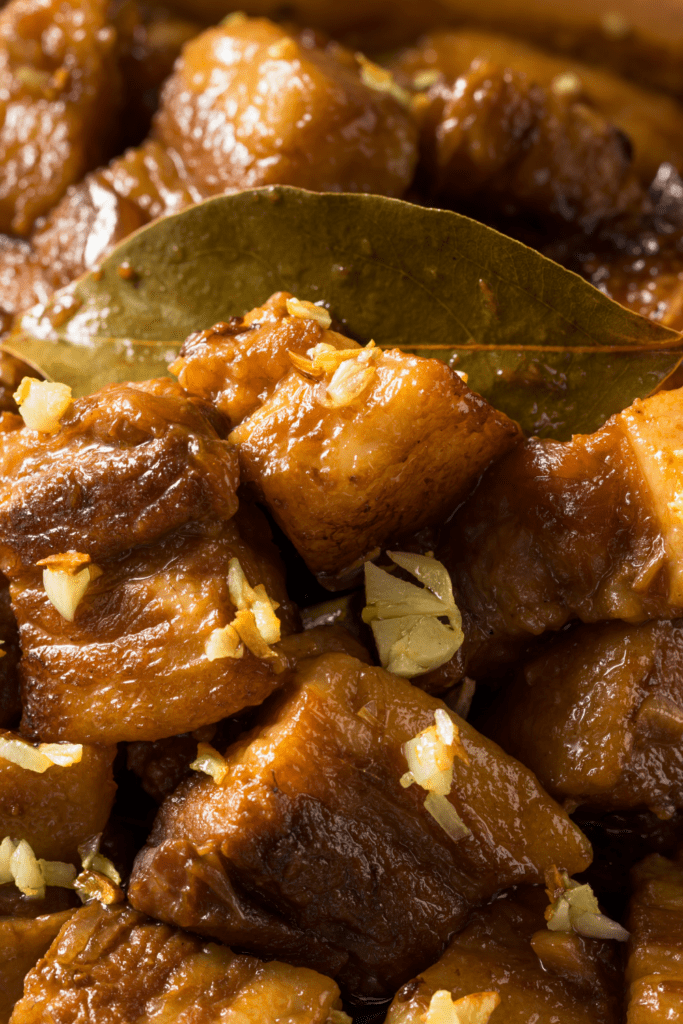
What is Filipino adobo?
Filipino adobo is a popular dish in the Philippines made with chicken or pork marinated in a wet sauce comprised of vinegar, soy sauce, garlic, and black peppercorns. It is typically cooked until the meat is tender and has absorbed the flavorful sauce. The sauce is essential to adobo, as it adds a distinct tartness and umami flavor to the dish.
Filipino adobo is a popular national dish of the Philippines that has gained worldwide recognition for its unique and delicious taste. It is a type of chicken or meat stew that is characterized by its tangy and savory flavor, thanks to its vinegar and soy sauce marinade.
The dish is usually prepared by marinating the meat in a blend of spices and pan-frying it before simmering it in the marinade until tender. With its rich cultural history and unique flavor profile, Filipino adobo has become a beloved dish that many people enjoy.
On the other hand, Puerto Rican adobo seasoning is a dry rub consisting of garlic, onion powder, salt, pepper, and oregano commonly used on meats before grilling or frying. The difference in the forms of adobo can be attributed to the cultural influence of Spanish colonization, which introduced different food preparation methods to the two countries.
Additionally, the dry rub form of Puerto Rican adobo is more conducive to grilling and frying, while Filipino adobo's wetter form makes it ideal for simmering and slow cooking. Regardless of their individual differences, both versions of adobo remain beloved parts of their respective country's culinary traditions.
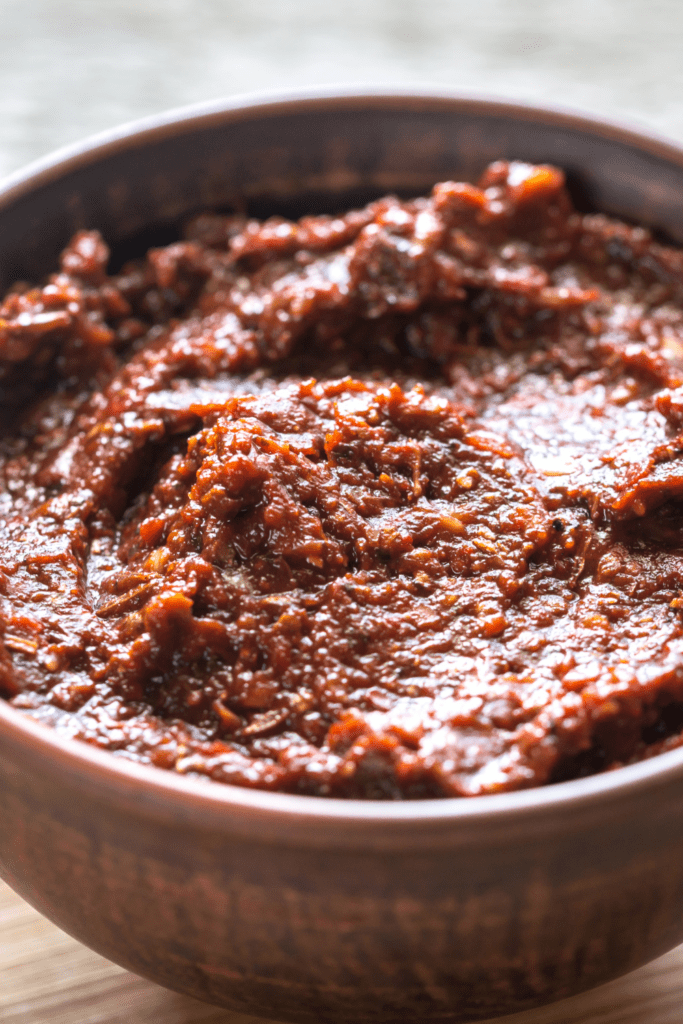
What is Mexican adobo?
Mexican adobo is a versatile seasoning that can be used as a condiment or cooking sauce with a base containing chilies, particularly Chipotle and Ancho peppers. The Ancho pepper, which is a Poblano pepper that has been dried, is the main ingredient in Mexican adobo.
In contrast, Puerto Rican adobo is a wet marinade with garlic and some acid, usually vinegar or citrus juices. Puerto Rican adobo is a mix of herbs and seasonings often added to food before or during cooking. The seasoning usually contains garlic powder, salt, oregano, black pepper, and other spices.
The main difference between the two varieties of adobo is the principal ingredients used to make the seasoning. Mexican adobo heavily relies on chilies, whereas Puerto Rican adobo is herb- and spice-based.
Adobo has a long history in Mexican cuisine, where it was typically used to preserve meat before refrigeration was available. As a result, adobo has been a fundamental ingredient in Mexican cooking for centuries, evolving into its present form today.
What flavor is adobo seasoning?
Adobo seasoning is known for its savory and mildly spicy flavor. Its unique taste results from the blend of various ingredients, including garlic, onion powder, oregano, and pepper. Some recipes also include cumin, paprika, and other spices, which are responsible for adding depth and complexity to the taste of adobo seasoning.
The overall flavor of the seasoning can be described as piquant, with a slight tang and a hint of smokiness. It's commonly used to marinate meat, poultry, and seafood, adding a flavorful kick to the dishes. Its versatility allows for its use in various recipes, ranging from Mexican to Puerto Rican cuisine. However, if you run out of adobo seasoning and need a substitute, several options can give a similar flavor profile.
Why You Need an Adobo Seasoning Substitute
There may come a time when you find yourself out of adobo seasoning in the middle of cooking your favorite dish. That's when you need an adobo seasoning substitute. It's important to have a backup plan as adobo seasoning brings a unique flavor to Puerto Rican dishes and is widely used in Latin American cuisine.
A substitute can save your dish from turning bland and unappetizing. The good news is that you have several options to choose from. Chili powder, Cajun seasoning, and Greek seasoning can all step in as substitutes for adobo seasoning, each with its own unique flavor profiles.
You can also make your own adobo seasoning with spices you may already have in your pantry. You can save your recipe with a little creativity and enjoy the same delicious flavors that adobo seasoning brings.
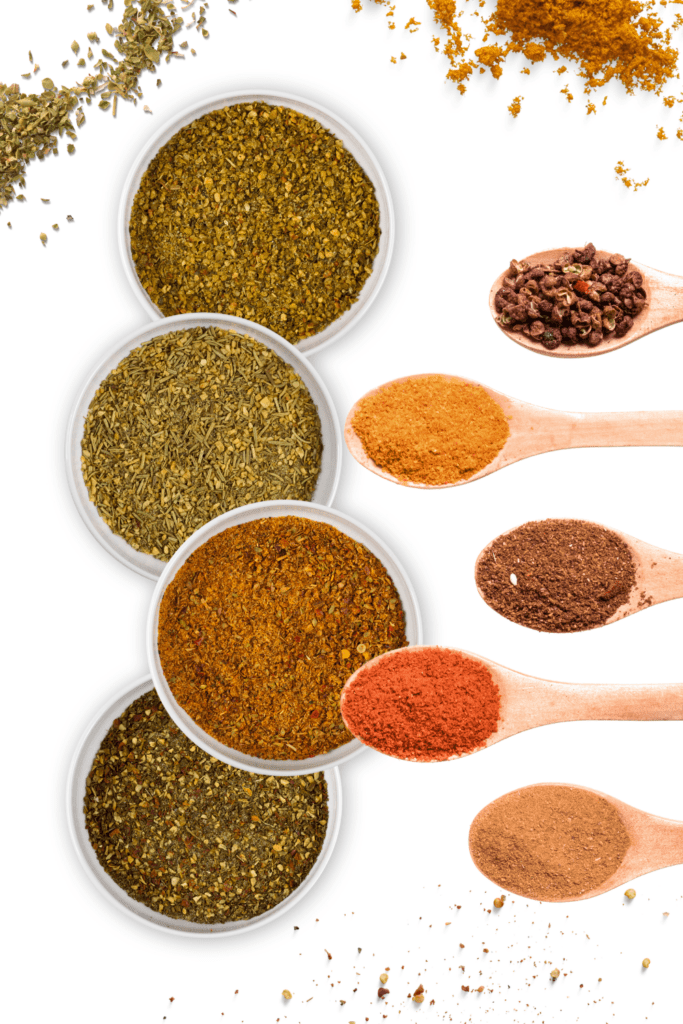
What can you use in place of adobo seasoning?
If you find yourself without adobo seasoning, fear not! There are plenty of substitutes you can use in its place. Chili powder is a popular choice that can add a similar smoky and spicy flavor to your dish. Cajun seasoning and Greek seasoning can also work as good substitutes.
For a more liquid option, you can try using adobo sauce or paste, chipotle in adobo sauce, ranchero sauce, or even Tabasco Chipotle hot sauce. Don't forget about garlic powder, oregano, and cumin, all common ingredients in adobo seasoning.
If you have the time and ingredients, making your own homemade adobo seasoning can be a fun and tasty option. Whatever substitute you choose, your dish is sure to be still delicious.
Making your own Adobo Seasoning: A DIY Recipe
Making your own Adobo seasoning at home is a great way to ensure your dishes are full of flavor without additives or preservatives. It is easy to make with simple ingredients that you probably already have in your kitchen.
Mix garlic powder, onion powder, oregano, cumin, salt, and black pepper for DIY Adobo seasoning. Depending on your taste preferences, some recipes call for additional ingredients such as paprika, chili powder, or turmeric.
The beauty of making your own Adobo seasoning is that you can adjust the measurements of each ingredient to suit your needs. Store the seasoning in an airtight container for up to six months and use it to season meat, poultry, fish, or vegetables. With this DIY Adobo seasoning recipe, you no longer need to rely on store-bought seasoning blends.
Is adobo seasoning the same as taco seasoning?
Another common question people have about Adobo seasoning is whether it is the same as taco seasoning. While they both feature some of the same ingredients, like chili powder and cumin, they are not identical. Adobo seasoning typically includes garlic and oregano, while taco seasoning often includes onion and paprika.
Additionally, adobo seasoning has a distinct sourness from the vinegar used in the recipe, whereas taco seasoning typically does not.
While you could potentially use adobo seasoning as a substitute for taco seasoning in a pinch, they are not interchangeable in all recipes. Always read the recipe carefully and check for any specific seasoning requirements.
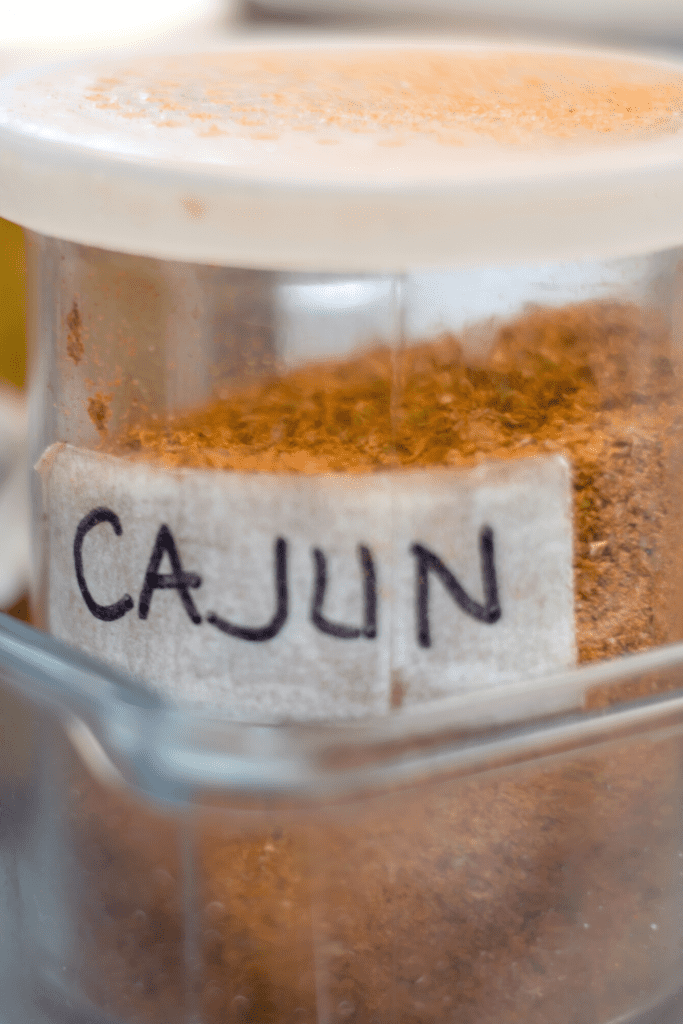
Is adobo the same as Cajun seasoning?
Moving onto the topic of adobo seasoning substitution, one might wonder if Cajun seasoning can serve as a suitable alternative. Although both seasonings contain a blend of spices, they have distinct flavor profiles. Adobo seasoning is traditionally used in Latin American cuisine and includes ingredients such as garlic, oregano, and vinegar, which adds a tangy flavor to dishes.
Cajun seasoning, on the other hand, is commonly used in Southern American cuisine and contains spices like paprika, cayenne pepper, and onion powder, adding a bold and smoky flavor.
While Cajun seasoning may not replicate the unique flavor of adobo seasoning, it can still offer a flavorful substitute for those in a pinch.
What is Goya adobo seasoning made of?
Goya adobo seasoning is popular for adding a savory and slightly spicy flavor to dishes. It is a blend of spices and seasonings, including garlic powder, onion powder, oregano, black pepper, and turmeric.
Some variations of Goya adobo seasoning may also contain additional ingredients such as coriander and cumin. This seasoning is often used in Latin American and Caribbean cuisine and can be found in most grocery stores.
While Goya adobo seasoning is a convenient and delicious option, plenty of alternatives can be used as a substitute when it's unavailable.

10 Adobo Seasoning Substitutions
Adobo seasoning is a staple in many Latin American and Filipino cuisines. It has a bold and flavorful profile that features garlic, oregano, cumin, and more. But what if you don't have any Adobo seasoning on hand?
Fear not; many delicious substitutes can elevate your dishes just as well. Here are 10 Adobo seasoning substitutions and why they work:
1. Homemade Adobo seasoning – Mix garlic powder, onion powder, turmeric, cumin, black or white pepper, dried oregano, and salt. This substitution is the closest you can get to the authentic taste of Adobo seasoning.
2. Adobo paste/sauce – A concentrated form of Adobo seasoning that packs a lot of flavor. If using paste, use a 1:1 ratio with the powder recipe. If using sauce, adjust the liquid ingredients in your recipe to prevent over-salting.
3. Cajun seasoning – Similar to Adobo seasoning, Cajun seasoning includes garlic powder, onion powder, paprika, and cayenne pepper. It adds a hint of spiciness that Adobo seasoning lacks.
4. Chili powder – Chili powder has a more robust flavor than Adobo seasoning. It's a great option if you prefer more heat and smokiness in your dishes.
5. Greek seasoning – A blend of herbs like oregano, thyme, and rosemary, Greek seasoning works well as a substitute for Adobo seasoning. It has a lighter taste profile but makes up for it in aromatic flavors.
6. Smoked paprika – For a smoky taste like Adobo seasoning, smoked paprika is the perfect substitution. It adds depth and complexity to a dish, especially when used in place of liquid smoke.
7. Chipotle in adobo sauce – If you're looking for a spicy kick, using chipotle peppers in adobo sauce works wonders. It's recommended to use in moderation because of its strong flavor profile.
8. Italian seasoning – Italian seasoning includes similar herbs like basil, oregano, and thyme to Greek seasoning. It offers a more subtle flavor but works great if you're looking for a simple substitute.
9. Fajita seasoning – Fajita seasoning includes cumin, garlic, and oregano-like Adobo seasoning. It has a distinctly Mexican flavor that pairs well with seasoned meat dishes.
10. Soy sauce and vinegar – This substitution requires mixing soy sauce and white vinegar in equal parts. It lacks the herbs and spices that Adobo seasoning has, but it adds a tangy, savory note to your dishes.
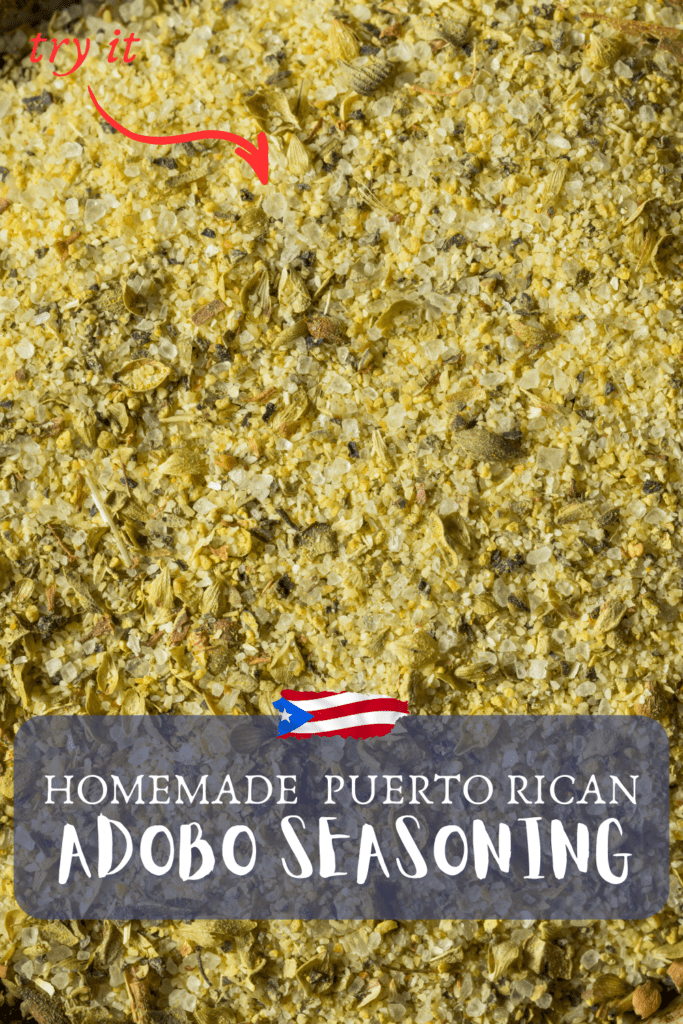
Puerto Rican Adobo Seasoning Recipe
Here's a recipe for Puerto Rican-style adobo that can be tailored to your taste preferences.
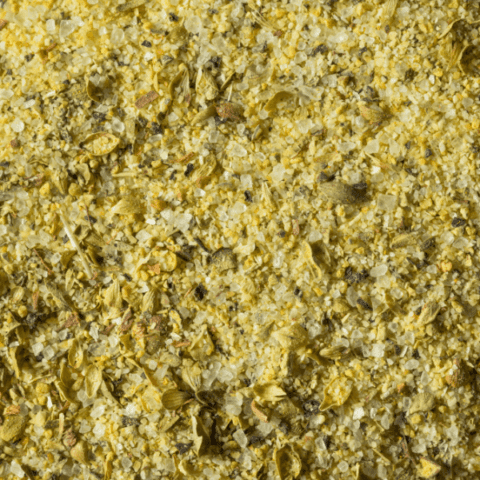
Homemade Puerto Rican Adobo Seasoning Recipe
If you're a fan of traditional Puerto Rican cuisine, then you know that adobo seasoning is a staple in most of their dishes. It's a simple seasoning blend packed with flavor and can be used in various recipes.
This recipe is easy to make from scratch and uses pantry staples to create a rich, smoky flavor perfect for chicken, pork, beef, or fish.
In this recipe, you will get about half a cup of adobo seasoning; the serving size is 1/4 teaspoon, which comes in 24 servings.
Ingredients
- 2 tbsp garlic powder
- 2 tbsp onion powder
- 1 tbsp ground cumin
- 1 tbsp dried oregano
- 1 tbsp black pepper
- 1 tbsp smoked paprika
- 2 tsp salt
Instructions
- Combine garlic powder, onion powder, ground cumin, dried oregano, black pepper, smoked paprika, and salt in a small mixing bowl.
- Mix thoroughly to ensure all ingredients are evenly distributed.
- Transfer the seasoning blend into an airtight container or jar and store it in a cool, dry place.
Notes
- Use high-quality spices for the best result. Freshly toasted and ground spices are better than their store-bought counterparts.
- You can customize the spice mix according to your liking. Add some cayenne pepper for some heat, or add some turmeric for an earthy aroma when roasting meats.
- This recipe is a dry rub and works best for meats. However, you can add it to soups, stews, and even vegetables for an extra flavor boost.
Recommended Products
As an Amazon Associate and member of other affiliate programs, I earn from qualifying purchases.
Nutrition Information:
Yield: 24 Serving Size: 1Amount Per Serving: Calories: 8Total Fat: 0gSaturated Fat: 0gTrans Fat: 0gUnsaturated Fat: 0gCholesterol: 0mgSodium: 195mgCarbohydrates: 2gFiber: 0gSugar: 0gProtein: 0g
These nutritional calculations might not be accurate. Please speak with a licensed nutritionist to assist you.
Adobo seasoning substitutions offer a variety of flavor profiles that can enhance your dishes, depending on your taste preference. Whether you prefer a spicy, smoky, or tangy flavor, there's a perfect substitute for you. Try one of these substitutes today, and let your taste buds be the judge!









